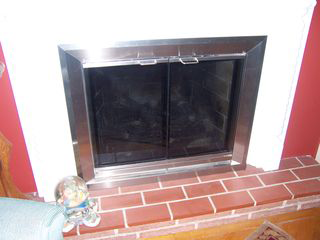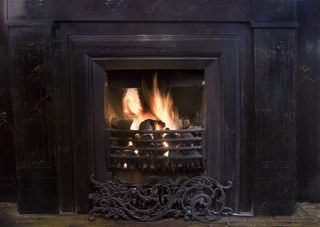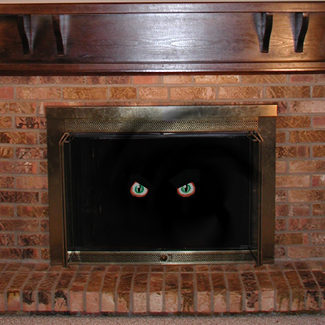
How can I tell if I have a vented or vent-free (ventless) gas logs?
Q: Jason, I bought my Virginia home about 3 yrs ago, and have never thought about the amount of heat / ac leaving the home until seeing a “home energy saving” piece on the local news. They recommended using a “Chimney Pillow” as a possible solution.
So, I came to your website, spent the last 90 minutes reading EVERY one of your replies to all of these posts, and have become not only more educated on this topic but have developed an admiration for your knowledge & straightforwardness.
The extent of my expertise with fireplaces ceases after the determination has been made that I actually have gas logs (which I do) & not real wood!
Question: How would I know if I have Vented Gas Logs or Non-Vented Gas Logs?
There is a damper (presumably installed during the 1988 construction), which has been closed since move-in day. There is also a gas line that has been turned off since move-in day. I have a VERY cold fireplace & a relatively new chimney cap (installed as a condition of sale 3 yrs ago).
I am fairly convinced that I need a Chimney Balloon, but at 300 lbs with no official contortionist training, I have been reluctant to take the time to remove our toddler gate which would be required to gain access to the fireplace allowing for an appropriate measurement (trust me, it is an event to take this thing apart…14 ft of it that encircles the entire family room)!!
So I guess the first step is determining the vented vs. non-vented issue, then get to work on the toddler gate. Thank you in advance for your time & consideration! – MW
A: Hi MW, I’m sorry it took so long to respond to your post. It has been a very busy week on the phones.
To see if you have a vented or non-vented gas log I would look first on the manufacturer plate on the gas log burner itself. It is usually by the knob that controls the flame height. It should be indicated there. If you can even find a model # you can google that number and see what comes up. If there is no indicator of manufacturer or model on the burner unit, about all you can do is call a professional to come and look at it or take some digital photos of it to a fireplace retailer and get their input.
There is no simple way to identify a vented gas log from a non-vent if it is not marked, even professionals have a hard time indentifying one from another. I have seen plenty of homeowners assume they had a no-vent just because the damper was not removed or clipped open, but it turned out they had a vented unit. Getting this mixup wrong can be lethal, so it is nothing to guess at.
Since you gas log is disabled/inoperable and the gas is shut down to it, you can install a Chimney Balloon to stop the cold draft. Just make sure you mark the gas valve clearly with the red lockout tag that comes with a Chimney Balloon.
If you are not comfortable getting your fireplace fitted and installed for a Chimney Balloon I would look in the phone book for an energy rater to do a house call to measure and install one. Most energy raters and insulation contractors and some chimney sweeps are familiar with Chimney Balloons and can install one for just the cost of a 1 hr house call.
Or if you feel adventurous and you have a folding carpenters ruler in-hand you can call us in tech support (608-467-0229) and we can walk you through the measurement process. It is not really that hard if you have a folding carpenters ruler. It is much easier than using a tape measure. – Jason

